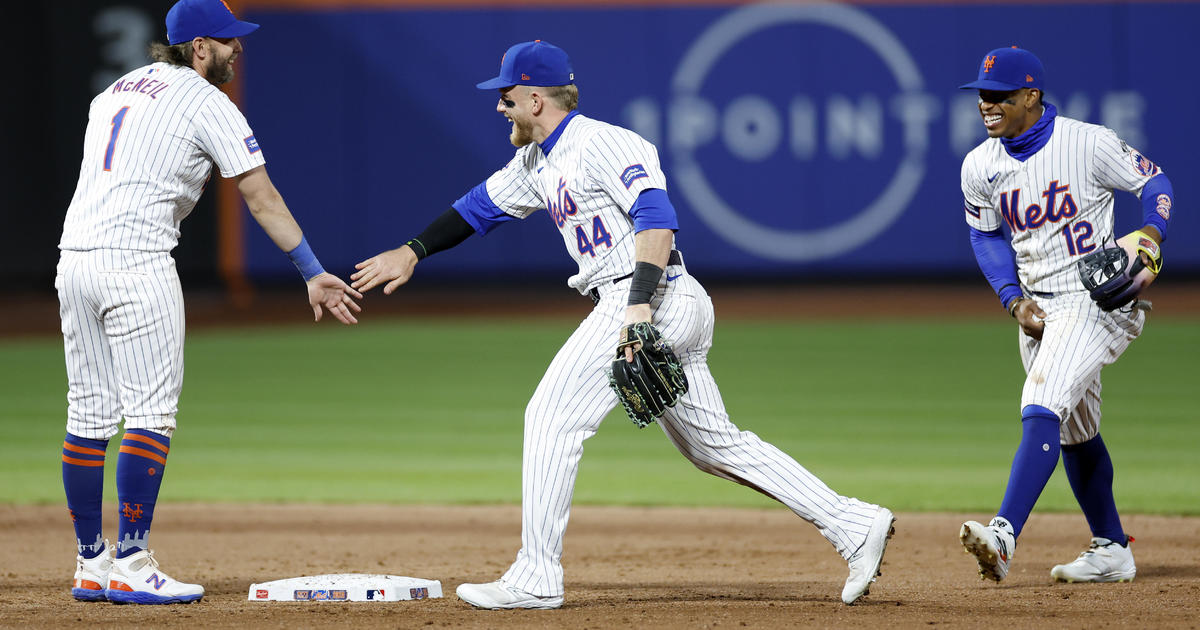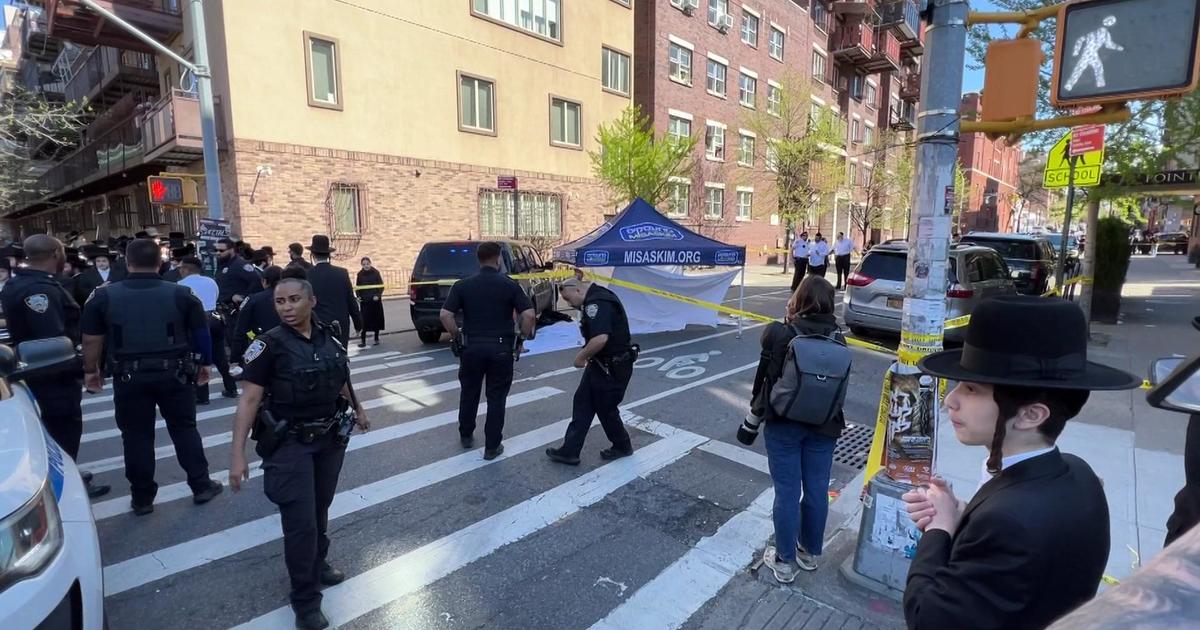Hartnett: Rangers Thriving Thanks In Part To Aggressive Penalty Killing
By Sean Hartnett
» More Columns
Look closely when the Rangers are shorthanded. This isn't a passive group that sits back and waits for the opposing puck carrier to bring the puck through the neutral zone. They get on the front foot and attack in four-man units.
Rangers penalty killers are out to cause disruption by pressuring opposition breakouts and throwing off the timing of puck movers. Assistant coach Ulf Samuelsson has spent more than two seasons serving as the team's penalty kill guru. He has drilled into his shorthanded units the importance of recognizing "trigger points" to swarm the opposition.
A trigger point can be a mistimed pass, a loose or bobbled puck, or a skater turning his back. Samuelsson wants his penalty killers to sense blood in the water and attack as four when the moment occurs.
"Speed is very important for our kill," the 51-year-old coach said in an exclusive interview with WFAN.com. "We're looking at trigger points, we're looking at getting loose pucks, we're looking to attack a little bit as well on the PK. That's the balance we're trying to find. When there is an opportunity, you need all four skaters to recognize it at the same time. If one guy recognizes it, a lot of time there's enough skill on the PK to make one play. When you get into your second and third play, that's when they get rushed and make plays out of their comfort zone."
First-year Ranger Jarret Stoll is impressed by the amount of time and detail that is spent on the practice ice and in the film room perfecting the penalty kill.
"You see us working on it a lot," Stoll told WFAN.com. "I'm really surprised with how often we work on special teams. Other teams I've been on, I've never worked on special teams that much. (Samuelsson) explains things well. The communication has been great."
The 6-2-2 Rangers enter Friday's home game against the Toronto Maple Leafs having killed 18 straight power plays dating to the third period of their Oct. 13 game against the Winnipeg Jets. The Blueshirts have gone six full games without allowing a power play goal. Stoll detailed the elements that make the Rangers' near-88 percent penalty kill so effective.
"It starts with faceoffs, then it goes to up-ice pressure," Stoll said. "Trying to break up their breakouts. If you can mess up their timing, screw up their timing a little bit on the breakout -- that's the first thing we want to do. Another thing we want to do is make them dump the puck. Then, smart pressure in-zone. Bobbled pucks, if people are turning their back to you, you've got to go. Those are trigger points that we want to pressure. When one guy pressures, all four of us have to pressure. We have guys that can get on pucks and disrupt the other team's breakouts. We've got a quick team here."
Rick Nash has often been the catalyst of transition penalty kill attacks. The 31-year-old winger possesses an active stick to deny passing lanes and to create turnovers, often leading to shorthanded rushes. He finished last season sixth in the NHL with 74 takeaways in all situations. His four shorthanded goals and five shorthanded points each tied for second in the league.
"It's very interesting to see a guy like Nash," Samuelsson said. "It's almost like he throws it into second gear when he's on the PK. He's so determined, so quick, so alert. You can sense that the opponent smells danger when he's on the ice, too. That certainly helps out."
As a team, the Rangers shared the league lead with nine goals in four-on-five shorthanded situations in 2014-15.
Instrumental to the penalty kill success is Jesper Fast, who has earned the Rangers' trust with his responsible play in all three zones. The 23-year-old winger's average shorthanded time on ice has risen to 2:13 per game from a nightly average of 1:06 last season.
"Jesper is a smart all-around player that you often see from Sweden," Samuelsson said. "They're well-groomed in all areas. His instincts are good. He's quick. He's getting some good guidance from an older player in Dominic Moore. They're playing a lot together. He's certainly benefits from playing with Dom. They make a good combo."
Together, Fast and Moore make up the forward pairing on the Rangers' top penalty-killing unit. Samuelsson believes that Moore's value increases during the playoffs.
"It's very important during the regular season to have a player like Dom, but it's a must to have players like that when you get to the playoffs," he said. "Dom is a good player who can be part of a very good fourth line. A fourth line is something that's very important in the playoffs. We take a lot of value in having a player like Dom in our lineup. He finds a way to play at the top of his game in the playoffs."
New to the mix is Stoll, who along with Moore is an expert at winning defensive zone faceoffs. The two-time Stanley Cup winner has taken 52 percent of his shifts in his own zone. Through 10 games, the 33-year-old center leads the NHL with a 65.6 faceoff percentage (40-for-61) among skaters that have taken at least 20 draws. Samuelsson has identified Stoll as a player who thrives in pressure situations.
"Jarret is a terrific player in his role," he said. "He knows what to do. He's not afraid to play when the game is on the line. He will execute and do the things he's called upon to do when the game is on the line. That's what's made him a winner over his career. We're very blessed to have him. He explains things well. The communication is there."
Communication is a two-way street. Moore and Stoll are two experienced players Samuelsson and fellow Rangers coaches rely on for valuable feedback.
"It's good for us coaches," Samuelsson said. "There's a lot of things that I look at, and I want their feedback and their opinions to make sure we're on the same page. Jarrett and Dom are guys that definitely give us a lot of feedback."
Fast credits the work done in the film room with Samuelsson and a full-effort mentality as reasons why the Rangers achieve penalty kill consistency.
"We go through their power plays before the game and try to find a way to stop them," Fast said. "We just try to be as consistent as possible. You always give your 100 percent. It's a big honor to play in these type of situations. You just keep going and work hard."
Back when Samuelsson skated for the Rangers during the mid-to-late 1990s, he was one of the league's most intimidating players in an era when physicality and brutality reigned supreme. At that time, relaxed rules on hooking, slashing, cross-checking, holding, and interference slowed down the pace and larger players dominated.
As a coach, he recognizes that the game is evolving. Blocking shots and winning net-front battles will always be part of the equation of a successful penalty kill. Samuelsson believes athleticism and skill are playing a greater role.
"I think for us, as group, we've really changed over these last two years to more speed, more skill and less physical play," Samuelsson said. "At the same time, you need to be very brave because you will be called upon to block a shot and have a mean fight in front of net as well. There's certainly that element left in that game."
Follow Sean on Twitter at @HartnettHockey



